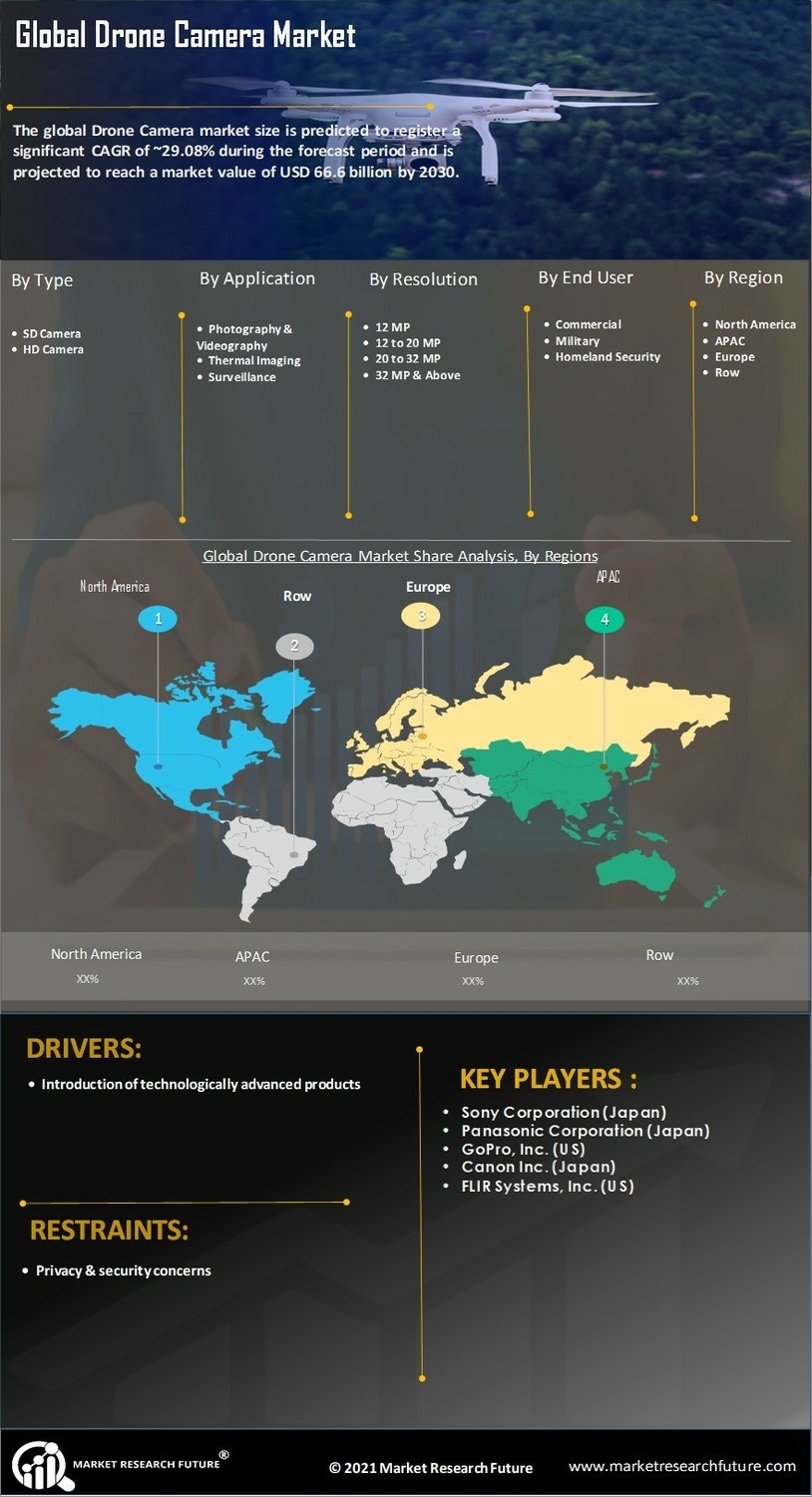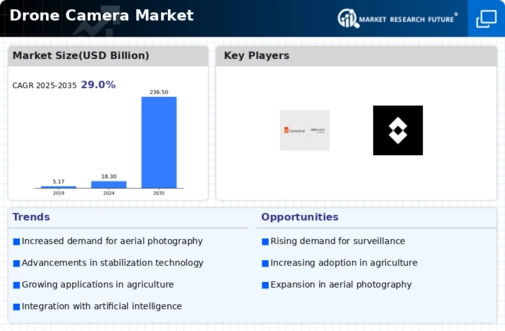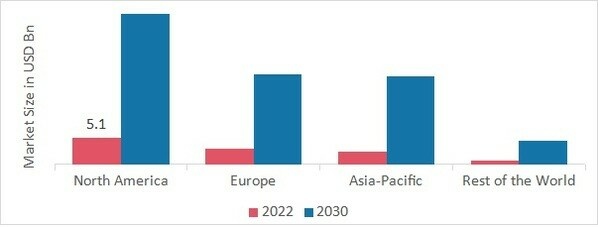Drone Camera Market Summary
As per Market Research Future Analysis, the Global Drone Camera Market was valued at USD 11.1 billion in 2022 and is projected to grow from USD 14.3 billion in 2023 to USD 66.2 billion by 2030, with a CAGR of 29.0% during the forecast period. The market is driven by rising demand for high-resolution cameras, increased defense budgets, and advancements in drone technology, including miniaturization and autonomy. The military sector is expected to dominate the market, with significant growth in surveillance applications. North America accounted for USD 5.1 billion in 2022, while the Asia-Pacific region is anticipated to grow at the fastest rate due to increased military funding and digitalization efforts.
Key Market Trends & Highlights
Key trends driving the Drone Camera Market include technological advancements and rising defense budgets.
- The Drone Camera Market is projected to reach USD 66.2 billion by 2030, growing at a CAGR of 29.0%.
- Drones with 32 MP and above cameras held a market share of approximately 45-47% in 2022.
- Surveillance applications are expected to grow at the highest CAGR during the forecast period.
- North America accounted for USD 5.1 billion in market size in 2022.
Market Size & Forecast
| 2022 Market Size | USD 11.1 Billion |
| 2023 Market Size | USD 14.3 Billion |
| 2030 Market Size | USD 66.2 Billion |
| CAGR (2023-2030) | 29.0% |
Major Players
Key players in the Drone Camera market include Sony Corporation, Panasonic Corporation, GoPro Inc., Canon Inc., and FLIR Systems Inc.




